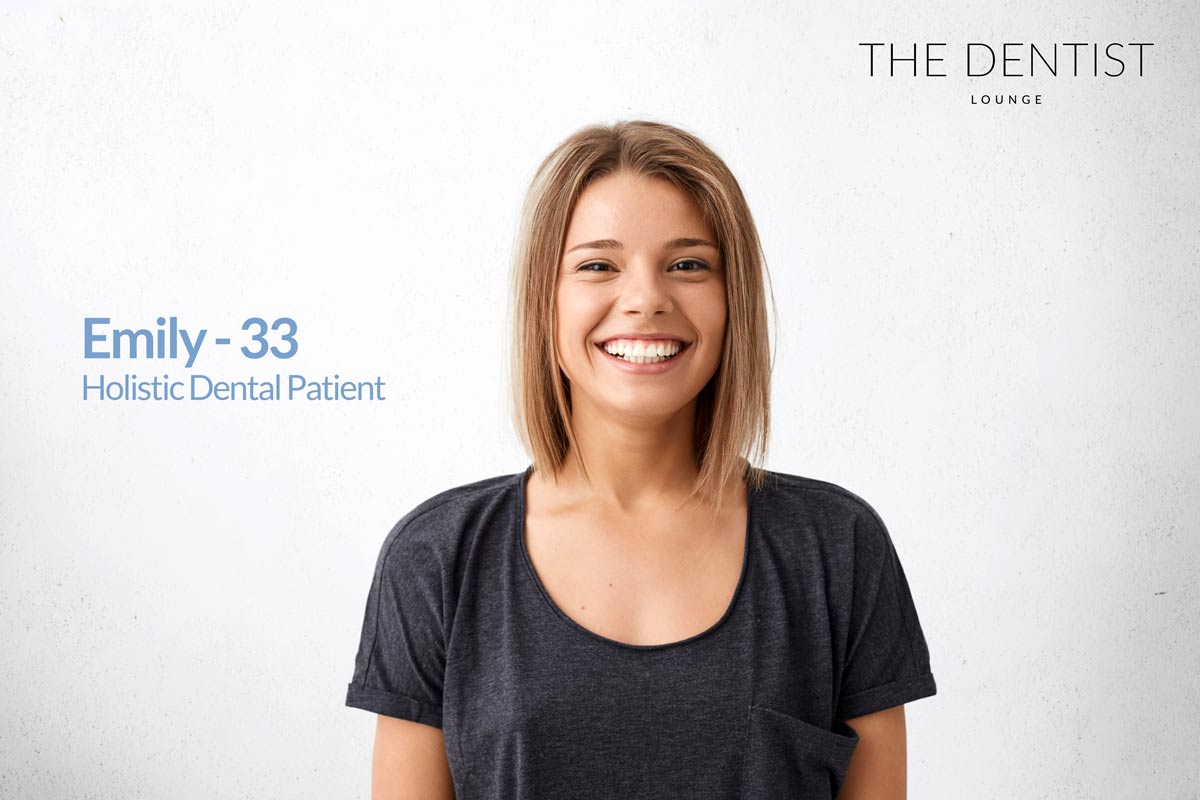Is Mouth Breathing Bad?
Mouth breathing, also known as oral breathing, refers to the act of breathing primarily through the mouth instead of the nose. While nasal breathing is the natural and preferred respiration method, mouth breathing can have negative implications for overall health, particularly dental health.
In this article, we will explore the effects of mouth breathing on dental health and the available dental services for correcting it. By understanding the causes, complications, and treatment options, individuals can take proactive steps to address this issue and promote better oral health.
Understanding Mouth Breathing
Mouth breathing can have various underlying causes, including chronic nasal congestion due to allergies or sinus issues, structural abnormalities in the nasal passages such as a deviated septum, enlarged adenoids or tonsils, habitual mouth breathing due to an open-mouth posture, or incorrect breathing patterns.
Nasal breathing vs mouth breathing
Nasal breathers primarily breathe through their nose, allowing the air to be filtered, humidified, and warmed before entering the respiratory system. Mouth breathers, on the other hand, bypass these natural processes and breathe through their mouth, leading to a range of potential issues.
Mouth breathing is generally considered less ideal than breathing through the nose in most situations. Breathing through the nose has several advantages, such as filtering and humidifying the air, releasing nitric oxide, and promoting proper tongue and jaw positioning. However, there are specific situations in which mouth breathing may be necessary or more appropriate, such as physical activity, nasal congestion and being in high altitudes.
Effects of mouth breathing on overall health
Mouth breathing can impact overall health in multiple ways. It reduces the efficiency of the respiratory system, limits oxygen intake, increases the risk of respiratory infections, disrupts sleep patterns, and may contribute to mental and emotional challenges such as anxiety and poor cognitive function.
The Connection between Mouth Breathing and Dental Health
Mouth breathing, while seemingly innocuous, can have profound effects on your dental health. This section delves into the intricate relationship between this common breathing habit and the various dental issues it may trigger. From malocclusion and misaligned teeth to open bites and dental arch development problems, we’ll explore how habitual mouth breathing can influence your oral well-being and why it’s essential to address these concerns promptly.
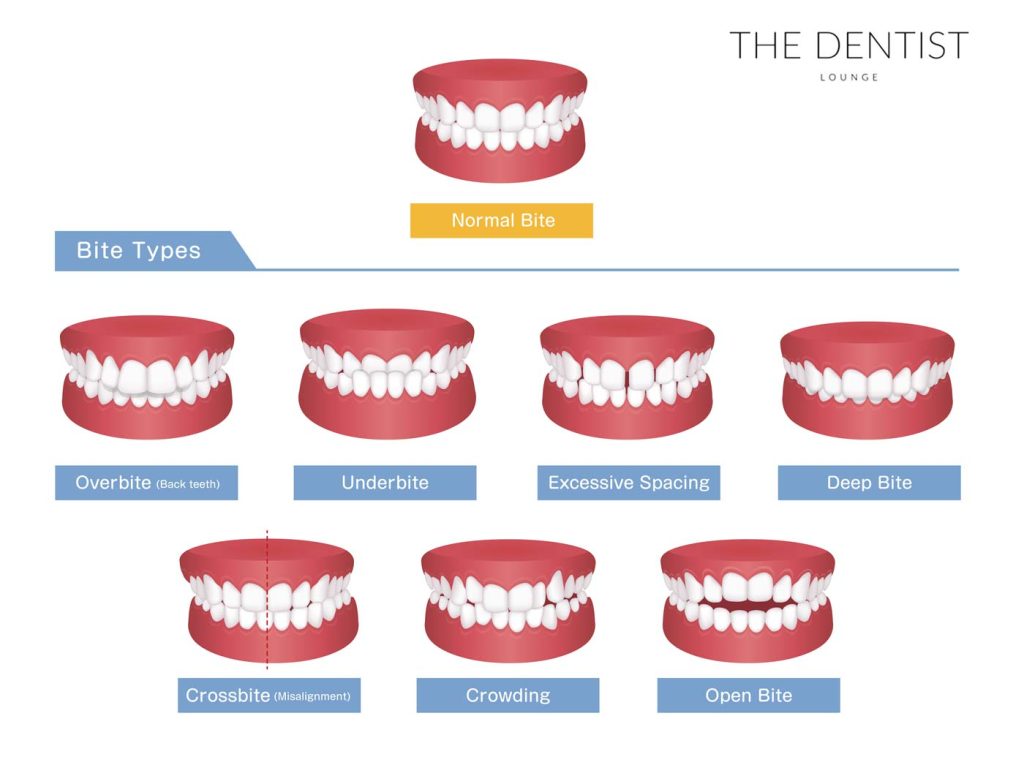
Dental Issues Caused by Mouth Breathing
Malocclusion and misaligned teeth
Mouth breathing can disrupt the natural alignment of teeth, leading to malocclusion (improper positioning of the upper and lower teeth) and misaligned dental arches. This can result in an overbite, underbite, crossbite, or crowded teeth.
Open bite and crossbite
Mouth breathers may develop an open bite, where the upper and lower front teeth do not meet when the mouth is closed. A crossbite can occur when the upper teeth sit inside the lower teeth, leading to potential functional and aesthetic problems.
Dental arch development problems
The habit of mouth breathing can negatively impact the development of dental arches, resulting in narrowed arches and insufficient space for permanent teeth. This can lead to crowding, impacted teeth, and the need for orthodontic intervention.
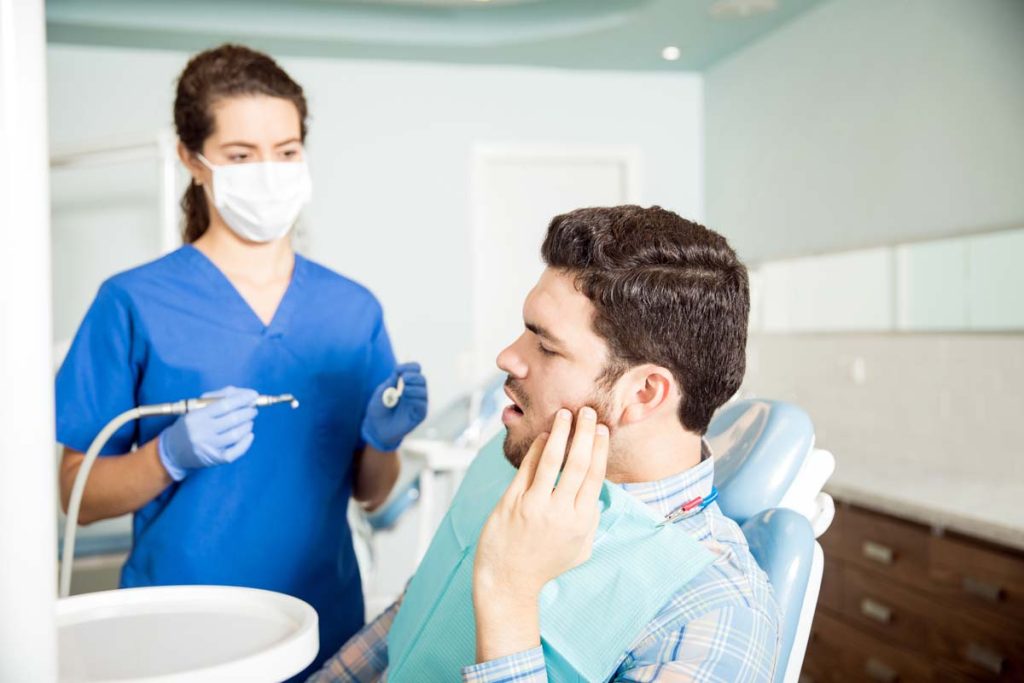
Oral Health Complications
Dry mouth and decreased saliva production
Mouth breathing often leads to chronic dryness in the mouth, as the normal nasal filtration process that helps moisten the air is bypassed. Reduced saliva production increases the risk of tooth decay, gum disease, and oral discomfort.
Increased risk of tooth decay and gum disease
The lack of natural saliva flow and the exposure of teeth to dry air can create an environment conducive to bacterial growth, increasing the risk of tooth decay and gum disease. The absence of nasal filtration also allows bacteria and debris to enter the oral cavity more easily.
Bad breath and oral hygiene challenges
A dry mouth resulting from mouth breathing can cause persistent bad breath (halitosis). Furthermore, maintaining proper oral hygiene becomes more challenging due to reduced saliva cleansing and antibacterial properties. Always remember to schedule your bi-annual teeth cleaning!
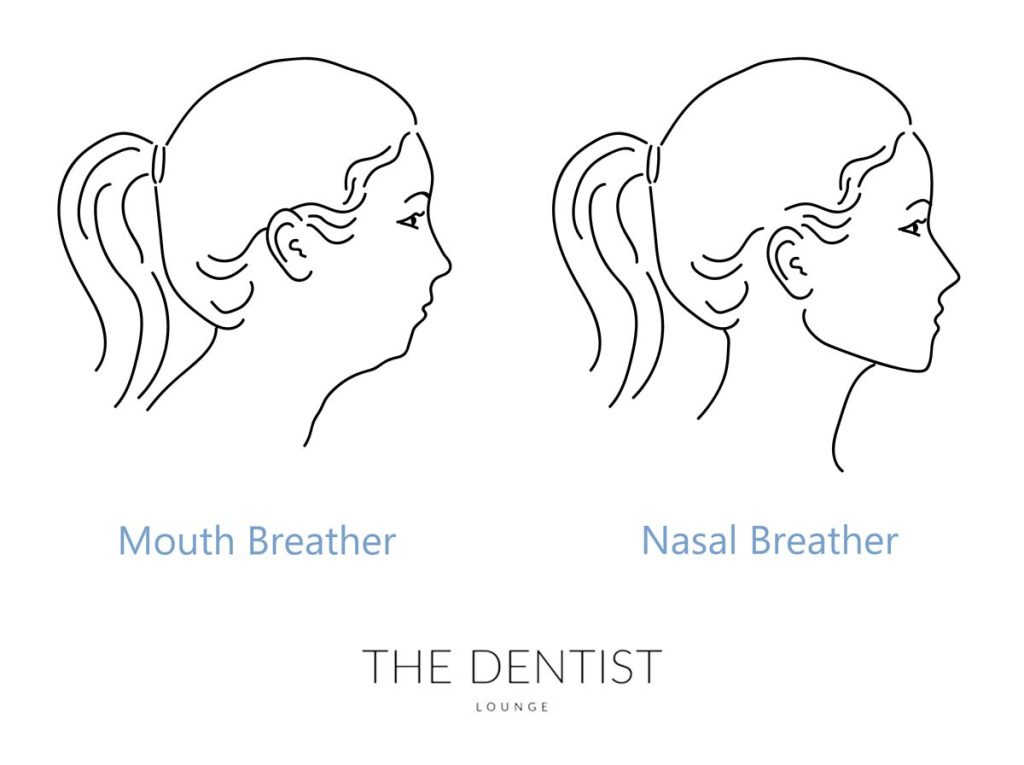
Implications for Facial Development
Altered facial structure and appearance
Mouth breathing can affect facial aesthetics by altering the development of facial muscles and bone structure. It may result in a longer face, flatter cheekbones, and a retruded chin, leading to an imbalanced facial appearance.
Narrowed dental arches and crowded teeth
The lack of proper nasal airflow and the habit of mouth breathing can contribute to narrowed dental arches, resulting in inadequate space for teeth eruption. This can lead to dental crowding, overlapping teeth, and potential bite issues.
Impact on speech and swallowing patterns
Mouth breathers may experience difficulties in speech articulation and swallowing due to altered orofacial muscle coordination. These challenges can affect communication skills and overall well-being.
Dental Services for Correcting Mouth Breathing
Orthodontic Solutions
Orthodontic assessment and treatment planning: Orthodontists can evaluate the dental and facial structure to determine the appropriate treatment approach. A comprehensive assessment helps identify malocclusion, misalignment, and other issues related to mouth breathing.
Braces and aligners to correct dental misalignment:
Traditional braces or clear aligners like Candid can be used to correct dental misalignment caused by mouth breathing. These orthodontic appliances gradually move the teeth into their proper positions, aligning the bite and improving overall oral function.
Palatal expanders for widening the dental arch:
Palatal expanders are used to widen the dental arches, providing adequate space for proper tooth eruption and alignment. By applying gentle pressure to the upper jaw, these appliances can help correct narrowed arches caused by mouth breathing.
Oral Myofunctional Therapy
Understanding orofacial muscles and their role
Oral myofunctional therapy focuses on improving the function of orofacial muscles, including the tongue, lips, and cheeks. This therapy aims to correct improper tongue posture, swallowing patterns, and dysfunctional oral habits.
Correcting improper tongue posture and swallowing patterns
Oral myofunctional therapists work with individuals to train proper tongue posture and swallowing techniques. By retraining these oral muscles, mouth breathers can establish healthier breathing patterns and promote nasal breathing.
Exercises to strengthen oral muscles and promote nasal breathing
Oral myofunctional therapy involves various exercises to strengthen the oral muscles and promote nasal breathing. These exercises may include tongue exercises, lip and cheek exercises, and breathing exercises to improve airflow through the nose.
Functional Appliances
Functional appliances are orthodontic devices that aid in correcting dental and skeletal discrepancies. These appliances help improve breathing, jaw position, and overall oral function.
Examples of functional appliances commonly used for mouth breathing correction include twin-block appliances, MARA (Mandibular Advancement Repositioning Appliance), and ALF (Advanced Lightwire Functional) appliances. These appliances promote proper jaw alignment, nasal breathing, and dental arch development.
How functional appliances help improve nasal breathing and dental alignment
Functional appliances work by repositioning the jaws, stimulating proper growth and development of the facial bones, and promoting nasal breathing. By addressing the underlying causes of mouth breathing, these appliances can aid in improving dental alignment and overall oral health.
Collaboration between Dental and Medical Professionals
The Dentist Lounge works in collaboration with sleep medicine specialists to prescribe CPAP therapy. CPAP involves wearing a mask over the nose or nose and mouth that delivers a continuous stream of pressurized air to keep the airway open. CPAP compliance is around 30%, which is why we want to make sure patients are aware of other treatment options.
Importance of interdisciplinary care for mouth breathing
Mouth breathing is a complex issue that often requires collaboration between dental professionals, orthodontists, and medical specialists such as otolaryngologists (ENT doctors). This interdisciplinary approach ensures comprehensive evaluation and tailored treatment plans.

Airway & Holistic dentist in Santa monica
Collaboration between holistic dentists, orthodontists, and otolaryngologists
Holistic dentists, orthodontists, and otolaryngologists work together to assess and treat mouth-breathing cases. Holistic dentists and orthodontists address dental and orthodontic concerns, while otolaryngologists diagnose and treat underlying medical conditions contributing to mouth breathing. A holistic dental exam is a great place to start your journey as it can help with many symptoms and point you in the right direction if more help is needed.
Addressing underlying medical issues contributing to mouth breathing
Otolaryngologists play a crucial role in identifying and addressing any underlying medical problems that contribute to mouth breathing, such as chronic nasal congestion, allergies, or structural abnormalities. By treating these conditions, the impact of mouth breathing can be mitigated.
Prevention and Lifestyle Tips
Promoting nasal breathing in children from an early age:
Educating parents and caregivers about the importance of nasal breathing in children is essential. Encouraging proper breathing habits from an early age, such as keeping the mouth closed during rest and promoting nasal breathing during activities, can help prevent mouth-breathing habits from developing.
Encouraging healthy breathing habits through education:
Raising awareness about the benefits of nasal breathing and the potential risks of mouth breathing is crucial. Providing educational resources and information to individuals of all ages can help them understand the importance of proper breathing and make conscious efforts to maintain healthy breathing habits.
Tips for maintaining good oral hygiene and preventing dental problems:
For individuals who struggle with mouth breathing, maintaining good oral hygiene practices becomes even more important. Regular brushing, flossing, and using mouth rinses can help minimize the risk of tooth decay, gum disease, and bad breath associated with mouth breathing.
Identifying and managing allergies and nasal congestion:
Addressing underlying allergies or nasal congestion is crucial in reducing mouth breathing tendencies. Working with medical professionals to identify triggers, and implementing appropriate treatments or lifestyle modifications, such as using allergy medication or exploring nasal irrigation techniques, can help manage these conditions.
Breathing exercises and techniques to improve nasal airflow:
Engaging in specific breathing exercises, such as deep diaphragmatic breathing and nasal breathing exercises, can help improve nasal airflow and encourage proper breathing patterns. These exercises may involve inhaling deeply through the nose, holding for a few seconds, and exhaling slowly through the nose.

Promoting nasal breathing in children from an early age:
Educating parents and caregivers about the importance of nasal breathing in children is essential. Encouraging proper breathing habits from an early age, such as keeping the mouth closed during rest and promoting nasal breathing during activities, can help prevent mouth-breathing habits from developing.
Encouraging healthy breathing habits through education:
Raising awareness about the benefits of nasal breathing and the potential risks of mouth breathing is crucial. Providing educational resources and information to individuals of all ages can help them understand the importance of proper breathing and make conscious efforts to maintain healthy breathing habits.
Tips for maintaining good oral hygiene and preventing dental problems:
For individuals who struggle with mouth breathing, maintaining good oral hygiene practices becomes even more important. Regular brushing, flossing, and using mouth rinses can help minimize the risk of tooth decay, gum disease, and bad breath associated with mouth breathing.
Identifying and managing allergies and nasal congestion:
Addressing underlying allergies or nasal congestion is crucial in reducing mouth breathing tendencies. Working with medical professionals to identify triggers, and implementing appropriate treatments or lifestyle modifications, such as using allergy medication or exploring nasal irrigation techniques, can help manage these conditions.
Breathing exercises and techniques to improve nasal airflow:
Engaging in specific breathing exercises, such as deep diaphragmatic breathing and nasal breathing exercises, can help improve nasal airflow and encourage proper breathing patterns. These exercises may involve inhaling deeply through the nose, holding for a few seconds, and exhaling slowly through the nose.
Take Action Today to Improve Your Oral Health and Breathing!
Mouth breathing can have significant implications for dental health, facial development, and overall well-being. If you or your child exhibits mouth-breathing tendencies, it’s crucial to take proactive steps now. Visit The Dentist Lounge, a holistic dental practice in Santa Monica, where Dr. Sara Larbi specializes in addressing mouth breathing issues.
Don’t wait; act today to explore orthodontic solutions, oral myofunctional therapy, and functional appliances that can correct dental issues and promote nasal breathing. By prioritizing proper breathing habits and seeking professional guidance, you can significantly enhance your oral health and experience the long-term benefits of optimal nasal breathing for overall well-being.
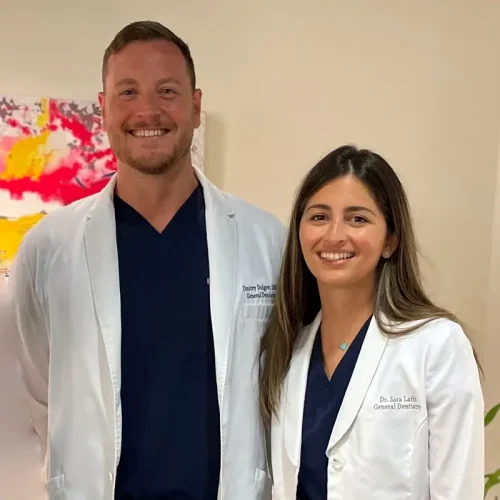
Holistic Dentists in Santa Monica
Schedule your dental appointment today

The Dentist Lounge




